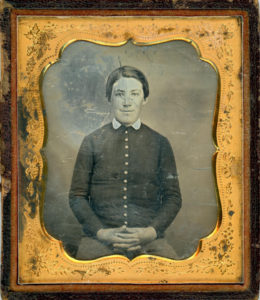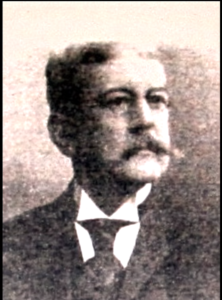Peter F. Stevens (c. 1860)
20 January 2024
This stunning portrait of Major Peter Fayssoux Stevens (1830 – 1910), Superintendent of the South Carolina Military Academy – the Citadel – was painted by his granddaughter Grace Annette DuPré (1894 – 1984, NYT obit).
Miss DuPré and grandson Paul Stevens donated the painting to the Citadel in 1959. The original resides in the archives there and a copy hangs on campus in Bond Hall. Thanks to Citadel Archivist Major Tessa Updike for kindly providing this.
The plaque at the bottom reads:
Class of 1849 – Superintendent 1859-1861
Colonel Confederate States Army
◄ • ►
Directed the fire against the Federal steamer Star of the West
in Charleston Harbor January 9, 1861. This being
the first shot of the War Between the States
Painted by Grace Annette Du Pre
◄ • ►
Presented to the Citadel May 31, 1959 by
Grace Annette Du Pre and Paul Stevens, grandchildren of Colonel Stevens
Francis E King (c. 1858)
18 January 2024
This is Michigan farm boy Francis E. King, probably in about 1858 when he was 15 years old.
At age 19, in August 1862, he enlisted as a Private in the 17th Michigan Infantry. Just over a month later he was killed in the Battle of Antietam.
Thanks to John Banks for providing a copy of this lovely daguerreotype, from the collection of Nick Sacco.
Charles Urquhart Williams (c. 1875)
15 January 2024
Charles Urquhart Williams was a staff officer to Brigadier General David R Jones at Sharpsburg in 1862 and after Jones’ death in January 1863 was with Brigadier General Montgomery D Corse. He was captured near Petersburg in mid-1864 and was a prisoner to the end of the war.
He was afterward a prominent lawyer in Richmond, VA, where this photograph was probably taken, possibly on the occasion of his service in the Virginia Legislature (1875-77). Thanks to g-g-g-grandson Jerrold Johnson for sending me this copy.



